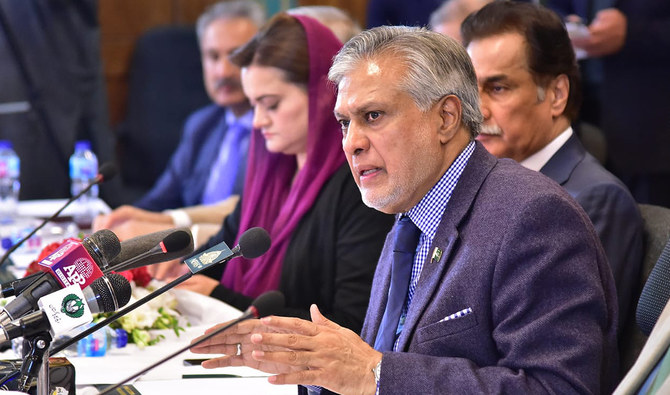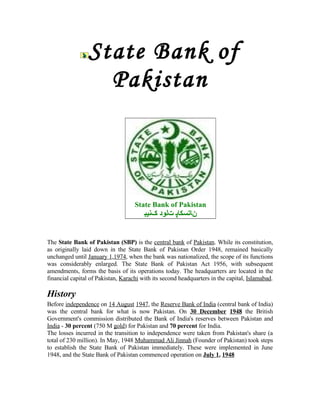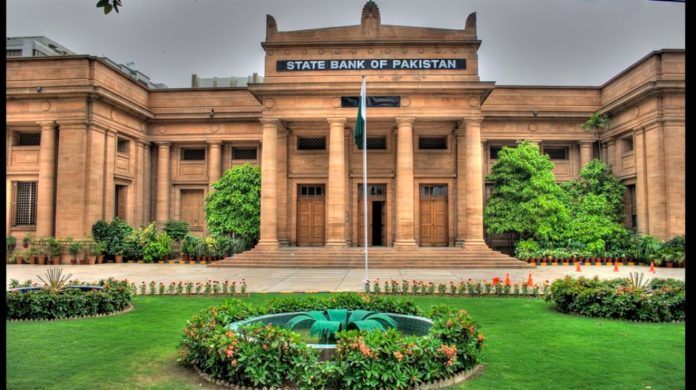Pakistan’s economic landscape in 2023 has shown signs of recovery, according to the State Bank of Pakistan (SBP). After a challenging period marked by a slowdown in economic activities, the SBP’s recent report indicates that a silver lining is now visible, suggesting early economic rejuvenation, partly driven by reduced global commodity prices and higher international growth forecasts.
A Reflection on Recent Measures
The SBP noted that measures taken to cool down the economy in the previous fiscal year, FY23, including monetary policy tightening, are now paying off. These measures have helped to control the rapid growth of imports, preventing a significant trade imbalance. However, despite these efforts, Pakistan continues to grapple with a substantial fiscal deficit, expected to range from 7-8%. This situation is primarily due to elevated interest payments associated with mounting debt, which surpasses the government’s target of 6.5% for fiscal year 2023-24.

Economic Growth Projections
Despite the observed improvements, the SBP has kept its initial projection for economic growth unchanged at 2-3% for fiscal year 2023-24. While this aligns closely with the International Monetary Fund’s forecast of 2.5%, it falls short of the government’s more ambitious target of 3.5%. In the preceding fiscal year, FY23, a combination of cooling measures and devastating floods resulted in a mere 0.3% economic growth, making it the third-lowest growth rate in seven decades.
Global Factors Impacting Recovery
Global economic prospects for 2023 have improved compared to earlier projections, as noted in the July 2023 World Economic Outlook. Furthermore, non-energy global commodity prices have eased, which bodes well for Pakistan’s economy. These trends may have positive implications for the country’s recovery.
Pakistan secured a $3 billion standby arrangement (SBA) from the IMF toward the end of FY23, which has helped alleviate immediate financial risks. The initial disbursement of $1.2 billion in July 2023, coupled with $3 billion in bilateral inflows, helped bolster the SBP’s foreign exchange reserves, reversing the declining trend.
Agricultural Growth and Incentives
The expected rebound in cotton and rice production is set to support agricultural growth in FY24. To encourage cotton production, the government announced a minimum price of Rs8,500 per 40 kg for the FY24 crop. This incentive has resulted in increased cotton sowing and encouraged farmers to invest in crop management practices despite rising prices for fertilizers and pesticides. Similarly, favorable weather conditions and rising domestic rice prices have incentivized growers to expand the area under paddy crops, boosting production.

Challenges Ahead
While the expansion in commodity-producing sectors is anticipated to have a positive impact on services in FY24, the effects of demand compression measures introduced in recent years may limit the pace of economic recovery. Furthermore, the lagged impact of previous monetary tightening and contractionary measures is expected to keep domestic demand in check.
Inflation and Revenue Prospects
Inflationary pressures are likely to moderate in FY24, driven by improved domestic supplies, a high base from the previous year, and the relatively stagnant trend in non-energy global commodity prices. However, unforeseen climate events, fluctuations in global commodity prices, and external account pressures remain potential challenges.
While Pakistan’s economy is showing early signs of recovery, several challenges persist. The government’s commitment to economic reform and financial management will play a pivotal role in the country’s quest for sustained economic growth and stability.
Stay tuned to Brandsynario for latest news and updates.





































